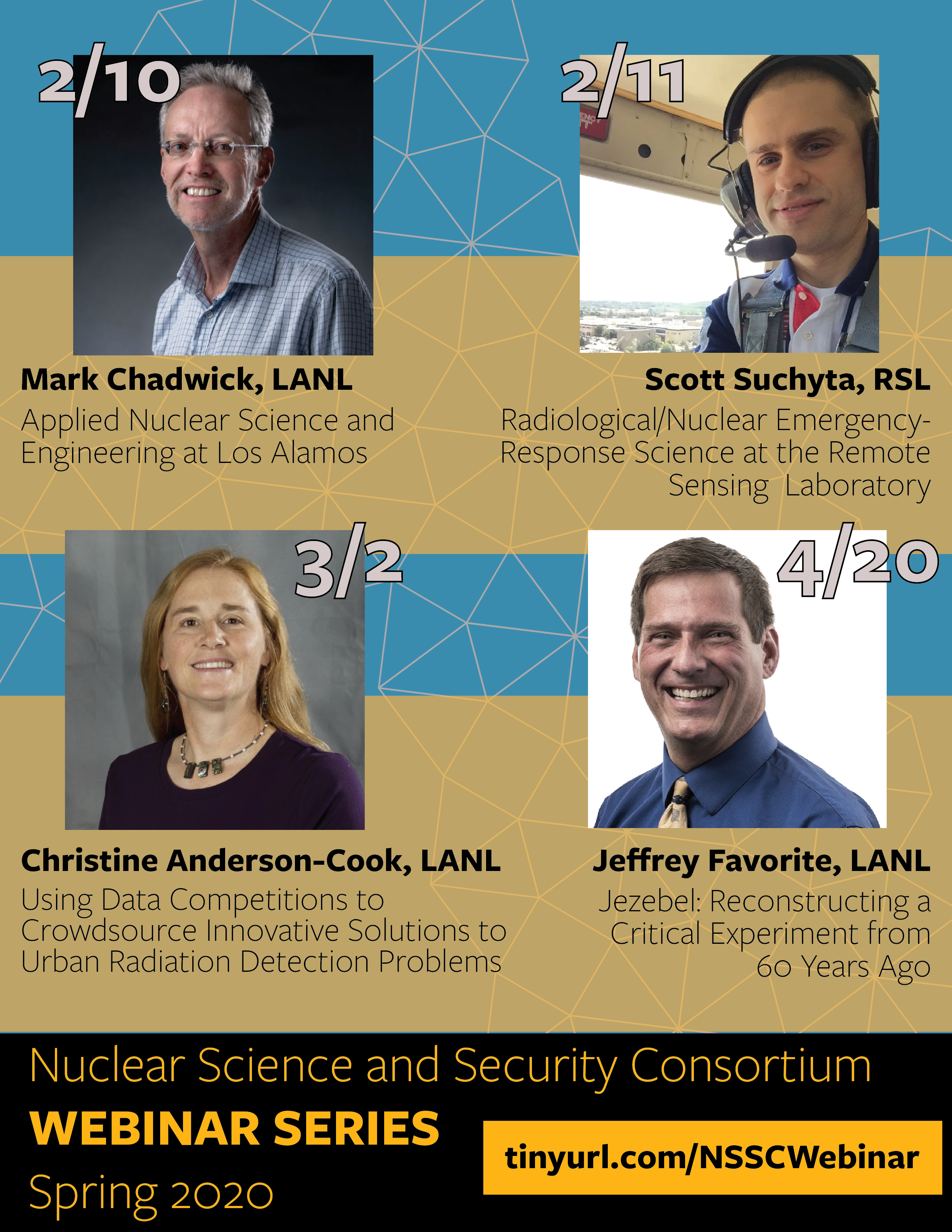The Nuclear Science and Security Consortium Webinar Series aims to inform academic audiences on the technical and policy aspects of the nuclear security and proliferation detection mission. Through the series, laboratory scientists and policy practitioners are invited to NSSC partner academic institutions to present on their work. The webinars are broadcast live to the NSSC community, allowing students, faculty, and scientists at partner institutions to watch in real-time and engage in the discussion. Recorded webinars are also hosted on the NSSC website (see below). Students attending the webinars in-person have the prospect to meet with visiting scientists and professionals to discuss research and professional development opportunities.
Most events are held on the University of California, Berkeley campus and broadcast to our partner institutions.
Webinars for Spring 2020 will be broadcast at this link.
SNAP – Spectral Nondestructive Assay Platform
 Steve Myers, Former Los Alamos National Lab employee with over 25 years of experience in the field of radiation detection, now sole proprietor of https://spectral-ops.com/
Steve Myers, Former Los Alamos National Lab employee with over 25 years of experience in the field of radiation detection, now sole proprietor of https://spectral-ops.com/
February 3rd, 2020 – 4:00 – 6:00 pm
Event hosted in person as part of the UCB NSSC Student Working Session.
Nuclear Science, Engineering & Deterrence. A Career that Matters at Los Alamos.
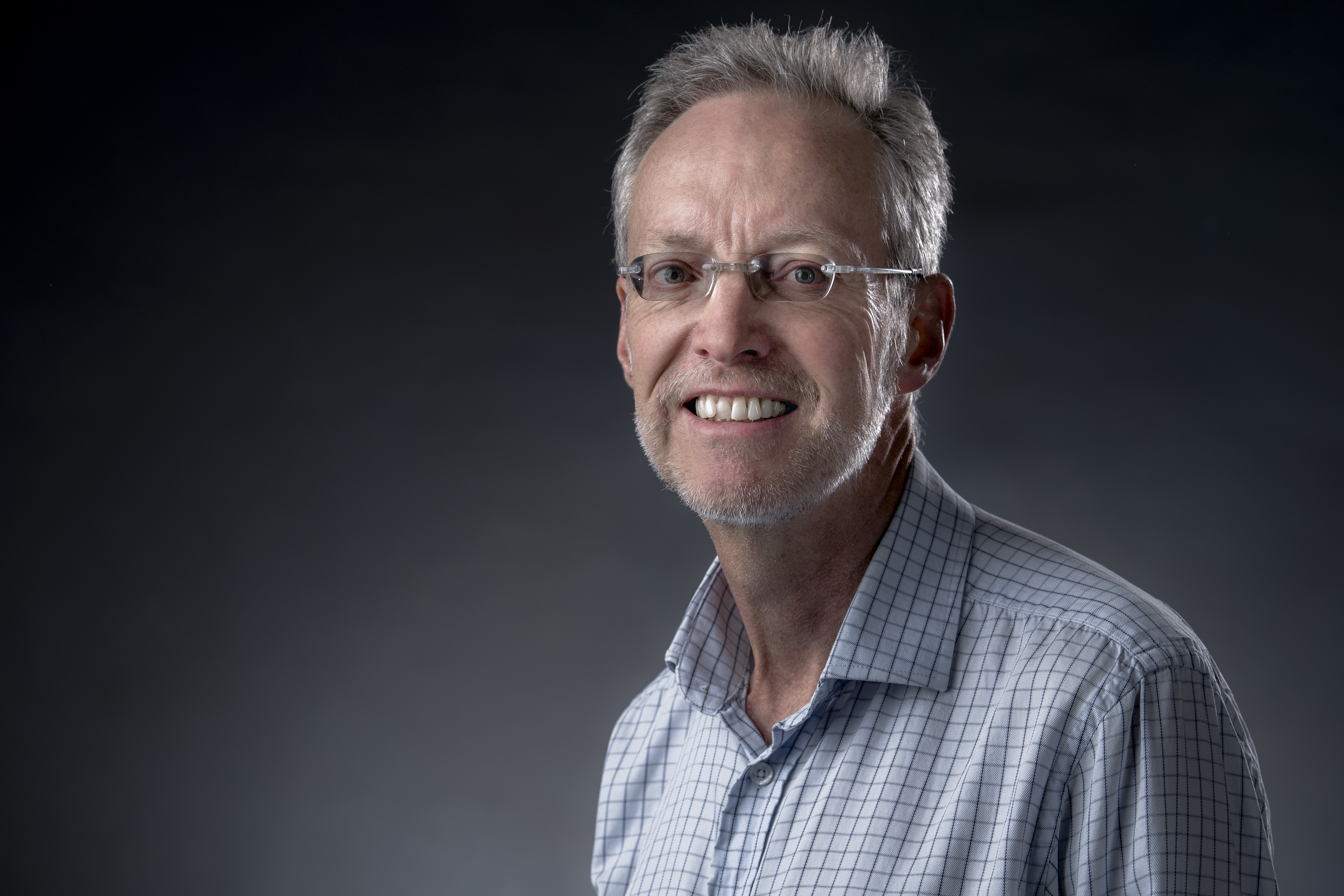 Mark Chadwick, Chief Scientist and Chief Operating Officer, ALDX, Los Alamos
Mark Chadwick, Chief Scientist and Chief Operating Officer, ALDX, Los Alamos
February 10th, 2020 – 4:00 pm – 5:00 pm
3105 Etcheverry Hall, UC Berkeley
Presented as a Department of Nuclear Engineering at the University of California, Berkeley Colloquium.
Abstract: I will describe research at Los Alamos that is advancing our US nuclear technology capabilities. Some of the applied areas we are working on are described: stockpile stewardship, and nuclear threat reduction. Experimental and simulation work related to our LANSCE facility, and our work at Nevada, are discussed.
Short bio: Mark Chadwick obtained his PhD from Oxford and has had a thirty year career at Los Alamos. He led the simulation code division (that includes the MCNP) and has led the DOE/NNSA Science Campaigns program that funds experimental work at LANL. He also leads the multi-lab US collaboration effort on cross section evaluations for the ENDF (evaluated neutron data file) database. Chadwick is an APS Fellow and a Los Alamos Laboratory Fellow.
Radiological/nuclear emergency-response science at the Remote Sensing Laboratory
 Scott Suchyta, Senior scientist at the Remote Sensing Laboratory
Scott Suchyta, Senior scientist at the Remote Sensing Laboratory
February 11, 2020 – 3 pm – 4:30 pm PST
4101 Etcheverry, UC Berkeley
Abstract: The mission of the DOE/NNSA Office of Emergency Response is to provide a versatile, capable, worldwide nuclear or radiological response with the technical capability to respond to any radiological/nuclear incident worldwide. Scientists at the Remote Sensing Laboratory (RSL) play an important role in this mission, serving on a variety of response teams. An overview of various radiological emergency-response assets will be given, with a primary focus on the expertise of RSL. Current capabilities and operational challenges in the topic areas of both crisis response (radiological search, identification, characterization, etc.) and consequence management (response to and mitigation of incidents) will be discussed. A wide range of radiation-detection platforms, including backpacks, vehicle-mounted systems, and aircraft-mounted systems will be presented.
How Close to Doomsday? Nuclear Dangers and Stopping a New Nuclear Arms Race
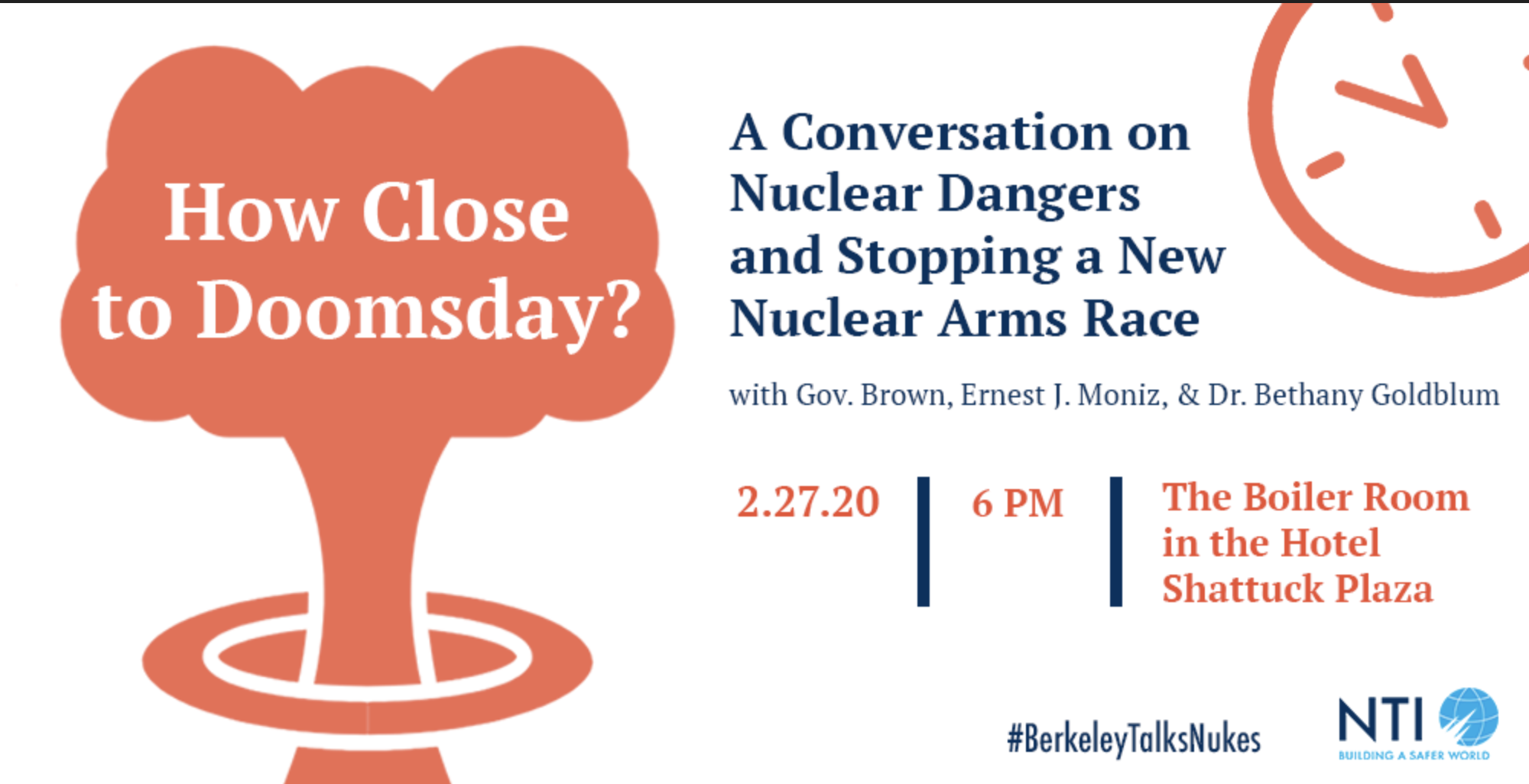
February 27th, 2020 6 pm PST
SOLD OUT SPECIAL EVENT will be live streamed here: https://www.youtube.com/watch?v=Weplhc_nyZ8
Join former California Governor Jerry Brown, former U.S. Secretary of Energy and Nuclear Threat Initiative (NTI) Co-chair and CEO, Dr. Ernest J. Moniz, and Dr. Bethany Goldblum, nuclear physicist and director of the Nuclear Policy Working Group at UC Berkeley, for an urgent conversation about today’s growing risk of nuclear use, as well as solutions that can bring us back from the brink. NTI’s Corey Hinderstein, former Department of Energy official and leader of its Iran Task Force, will moderate the event—which will include real-time audience voting and Q&A.
Co-sponsored by the NSSC, the Nuclear Threats Initiative and the Nuclear Policy Working Group.
Using Data Competitions to Crowdsource Innovative Solutions to Urban Radiation Detection Problems
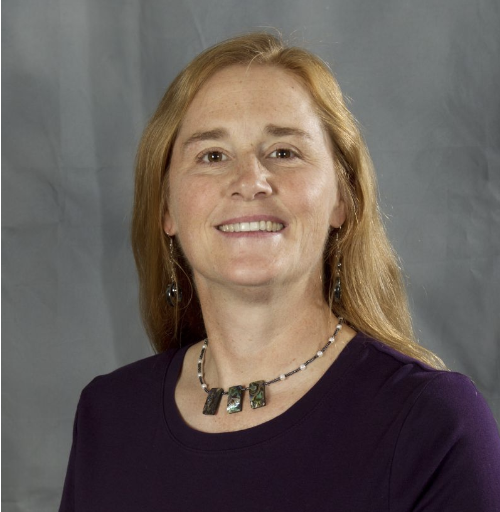 Christine M. Anderson Cook, Statistician, Los Alamos National Laboratory
Christine M. Anderson Cook, Statistician, Los Alamos National Laboratory
March 2nd, 2020 – 4 pm – 5 pm PST
3105 Etcheverry Hall, UC Berkeley
Presented as a Department of Nuclear Engineering at the University of California, Berkeley Colloquium.
Abstract: In 2017 and 2018, NA-22 sponsored a project to host data competitions to solicit innovative solutions for urban radiation detection problems. A team from Los Alamos, Oak Ridge and Berkeley National Laboratories fielded and hosted two competitions. The first was restricted to those with a government affiliation, while the second was hosted on Topcoder and was open to an international field of competitors. The competitors were asked to detect, identify and locate 6 different radioactive sources from simulated data that modeled a detector being driven down a urban street. A total of 87 competitors created over 2500 submissions across the two competitions. We will present a new methodology for creating the training and test data sets for the competition that thoroughly explore the diverse problems space considered. In addition, an extended post competition analysis is able to highlight strengths and weaknesses of the winning algorithms, and make detailed comparisons between competitors. Different version of the problem may want to emphasize aspects of the detect, identify and locate problem for runs with sources and false positives for runs with no sources. Hence, multiple criterion optimization with Pareto fronts allows identification of top solutions for different combinations of the study objectives. Results from the two competitions will be presented and the solution with their improvement of currently used methods compared.
Bio: Christine Anderson-Cook has been a Research Scientist in the Statistical Sciences Group at Los Alamos National Laboratory since 2004. She currently leads projects in the areas of sequential design of experiments, non-proliferation and effective hosting of data competitions. Before joining LANL, she was a faculty member in the Department of Statistics at Virginia Tech for 8 years. Her research areas include response surface methodology, design of experiments, reliability, multiple criterion optimization and graphical methods.
She has authored more than 200 articles in statistics and quality peer-
reviewed journals, and has been a long-time contributor to the Quality Progress Statistics Spotlight column. She has co-authored a popular book on Response Surface Methodology with Raymond Myers and Douglas Montgomery. She has served on the editorial boards of Technometrics, Journal of Quality Technology, Quality Engineering and Quality and Reliability Engineering International.
She is an elected fellow of the American Statistical Association and the American Society for Quality. She is the recipient of the ASQ 2018 Shewhart Medal, the ASQ Statistics Division 2012 William G. Hunter Award, and a two-time recipient of the ASQ Shewell Award. In 2011 she received the 26th Annual Governor’s Award for Outstanding New Mexico Women.
Jezebel: Reconstructing a Critical Experiment from 60 Years Ago
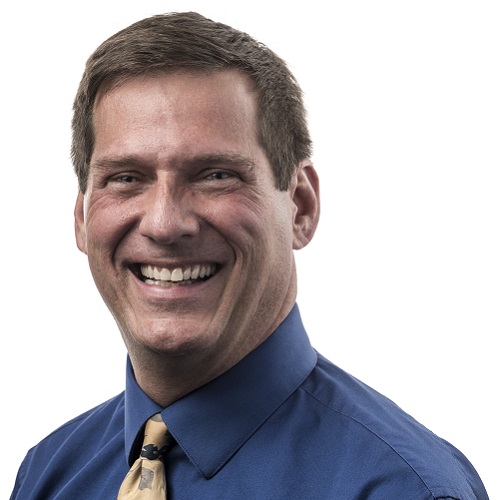 Jeffrey A. Favorite, Ph.D. Los Alamos National Laboratory, Radiation Transport Applications Group (XCP-7)
Jeffrey A. Favorite, Ph.D. Los Alamos National Laboratory, Radiation Transport Applications Group (XCP-7)
POSTPONED DUE TO COVID-19 TRAVEL RESTRICTIONS
3105 Etcheverry Hall, UC Berkeley
Presented as a Department of Nuclear Engineering at the University of California, Berkeley Colloquium.
Abstract
The Jezebel experiment of 1954-1955 was a very small, nearly-spherical, nearly-bare (unreflected), nearly-homogeneous assembly of plutonium alloyed with gallium. This experiment was used to determine the critical mass of spherical, bare, homogeneous Pu-alloy. In 1956, the critical mass of Pu-alloy was determined to be 16.45 ± 0.05 kg. The experiment was
reevaluated in 1969 using logbooks from the 1950s and updated nuclear cross sections. The critical mass of Pu-alloy was determined to be 16.57 ± 0.10 kg.
In 2013, the 239 Pu Jezebel experiment was again reevaluated, this time using detailed geometry and materials models and modern nuclear cross sections in high-fidelity Monte Carlo neutron transport calculations. Documentation from the 1950s was often inconsistent or missing
altogether, and assumptions had to be made. The critical mass of Pu-alloy was determined to be 16.624 ± 0.075 kg. Historic documents were subsequently found that validated some of the 2013 assumptions and invalidated others. In 2016, the newly found information was used to once
again reevaluate the 239 Pu Jezebel experiment. The critical mass of Pu-alloy was determined to be 16.624 ± 0.065 kg.
This talk will discuss each of these evaluations, focusing on the calculation of the uncertainty as well as the critical mass. We call attention to the ambiguity, consternation, despair, and euphoria involved in reconstructing the historic Jezebel experiment.
This talk is quite accessible for undergraduate students as well as non-majors.
Biography
Dr. Jeffrey Favorite received his Bachelor’s, Master’s, and Ph.D. in nuclear engineering from the Georgia Institute of Technology in 1993, 1994, and 1998, respectively, where he studied variational perturbation methods in nuclear reactor physics under Prof. W. M. Stacey. A paper based on his Master’s thesis won the Mark Mills Award from the American Nuclear
Society in 1995. In 1998, Dr. Favorite joined X-Division at Los Alamos National Laboratory, where he remains. His work and research are in the areas of neutron multiplication and criticality, neutron and photon shielding, and other neutron and photon simulations and analyses
using the MCNP Monte Carlo code, the PARTISN discrete-ordinates code, and other transport codes. His particular interests are in perturbation and sensitivity methods as well as inverse and optimization methods for neutron and photon transport problems. Interface and boundary
perturbations are of special interest. In Los Alamos, Dr. Favorite is active in the performing arts, youth programs, and the Episcopal church.
To review past webinars and watch webinar recordings visit this site.
